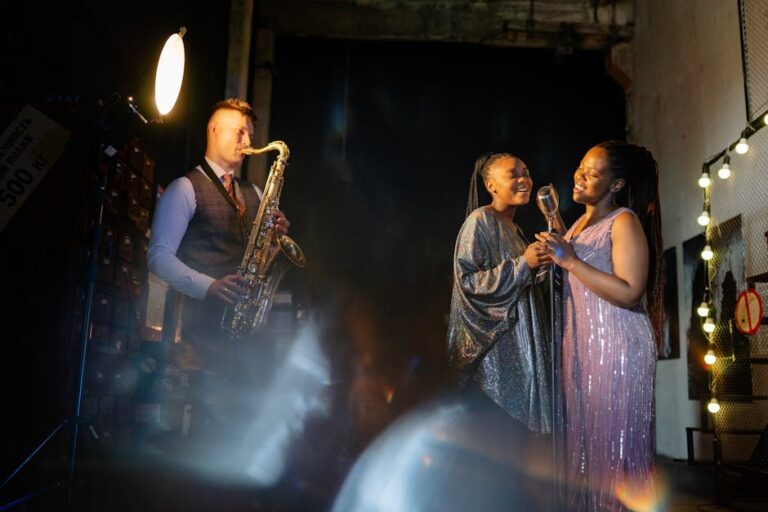Bloody hell, another seven years already? Feels like yesterday I was trying to figure out if Flash was still a thing, and here we are, staring down 2025. Time just flies when you’re wrestling with content management systems and trying to explain why a well-placed comma actually matters. Or doesn’t, depending on who you ask and how much coffee they’ve had. I’ve seen so many trends come and go, entire platforms rise and fall, companies that were once the darlings of Silicon Valley ending up as footnotes. Seven years, that’s a lifetime in this business. A genuine eternity. Folks talk about the seven-year itch like it’s just for marriages, but trust me, it’s real for websites, for brands, for the very idea of what online even means.
You get a lot of starry-eyed graduates come through, full of big ideas, all about “disruption” and “paradigm shifts.” Bless their hearts. I just nod, maybe grunt a bit, then tell ‘em to look at what happened to MySpace. Or even Friendster, if they’re old enough to remember that. What works today, what’s the buzz, the thing everyone’s chasing, by the time seven years roll around, it’s probably ancient history, or at best, something your dad still uses. It’s a natural cycle, a cleansing fire for the digital space. Either you adapt, you shift, you evolve, or you’re toast.
What happens if a website is left untouched for seven years?
It just collects digital dust, that’s what happens. It turns into a ghost town. Look at the analytics. Your bounce rate would be higher than a kangaroo on a pogo stick. Your conversions? Non-existent. It’s like leaving a shop window display from 2005 up in 2025. People walk past, maybe they laugh, but they ain’t coming in to buy anything.
Think about the big ad agencies, the ones everyone used to whisper about. They’ve had to scramble. Remember when it was all about the TV spots? Now it’s… everything. Digital is the air they breathe, or choke on. You watch firms like
WPP
, a massive beast with its tentacles everywhere. They bought up half the digital world in the early 2000s, trying to keep pace. Ogilvy, GroupM, Mindshare, these are names that have been around forever, but even they’re constantly reinventing themselves, trying to stay ahead of whatever the next big thing is. Or they should be. It’s not easy, no siree.
The way we consume content, that’s changed more than anything in seven years. It really has. Used to be you’d go to a blog, sit down, read a proper article. Now? It’s TikTok, it’s short-form video, it’s quick hits, it’s snippets. You’ve got to grab attention in three seconds or less. And then there’s the whole influencer thing, which, God help us, shows no signs of slowing down. People trusting some random kid on YouTube more than a big news outlet. It’s bonkers.
Even the tech itself. You buy a phone, swear it’s the best thing since sliced bread, seven years later it’s a brick, a paperweight. The processing power alone. The cameras. It’s all just… faster, better, more. The same goes for the underlying architecture of a website. What was secure and lightning-fast in 2018? Probably a security risk and slower than a wet week in Newcastle now. The algorithms change daily, google sneezes, and your rankings drop like a stone. What’s popular today, what search terms people use, how they phrase things, it all shifts. You gotta keep an ear to the ground, always listening to the chatter, seeing what’s resonating with the punters. Or else you’re just yelling into the wind.
Omnicom Group
, they’re another one, a behemoth, DDB, BBDO, TBWA – they’ve got to wrestle with this constant evolution. They can’t just rest on their laurels. They’ve gotta be hiring people who get the latest platforms, the youngest talent who actually understand why people watch unboxing videos. I sometimes think they just throw money at problems, hoping something sticks. Maybe that’s the only way to manage a beast that size.
The tools we use, they’re different too. Seven years ago, we were probably still talking about Joomla or Drupal as viable options for small to mid-sized sites. Now everyone wants something simpler, drag and drop, AI-powered. Oh, the AI. That’s the real kicker. Every second person’s got an AI tool they swear by for writing, for design, for optimisation. Some of it’s good, some of it’s absolute guff. It’s like the wild west all over again, everyone staking a claim, most of them selling snake oil.
Is “7 seven years” a fixed period for digital strategy review?
Nah, not fixed, mate. It’s a natural benchmark, a good excuse to kick the tyres hard. But honestly, in this game, if you’re not reviewing your strategy every six months, maybe even every quarter, you’re already behind. Seven years is when you look back and say, “Holy moly, look how far we’ve come… or how far we’ve fallen.” It’s not a rule carved in stone. It’s just what tends to happen to digital assets, they age out, get stale. Think of it like dog years for your website.
Think about the publishing world. News organizations like
Gannett
or
News Corp
. They were still clinging to print for dear life seven years back, some of them are still doing it, bless ’em. But the real money, the real audience, moved online. And then it moved to mobile. And then it moved to apps. And then to social feeds. They’ve had to completely overhaul how they gather news, how they present it, how they monetize it. Subscription models, paywalls, native advertising, sponsored content – they’ve tried it all. Some worked, some blew up in their faces. It’s a constant tightrope walk.
Content creation itself. It’s gotten… different. Less about long-form thought pieces, more about bite-sized, shareable, visual stuff. You think back to the early days of blogging, people just writing whatever popped into their heads. Now it’s all optimized, keyword-stuffed, perfectly structured for search engines, for social shares. You gotta play the game, or you don’t get seen. It’s a factory sometimes, a content mill, grinding out stuff that’s “relevant” and “engaging.” Sometimes it feels like we’ve lost a bit of the soul of it, you know? The raw, unvarnished opinion. It’s all polished and pristine.
Do people still read blogs after seven years?
Sure, they do, but what kind of blogs? Not the ones collecting dust, certainly. The ones that are regularly updated, that keep pace with what’s happening. The ones that offer something unique, something you can’t get anywhere else. If you’re providing something valuable, something that speaks to your audience, they’ll keep coming back. But you can’t just put it out there and walk away for seven years and expect people to remember you. Loyalty in the digital sphere is fickle. Very fickle.
The firms that are really making waves now, the ones pushing the envelope, are often the ones that didn’t even exist seven years ago, or were just tiny startups. Look at
VML
(VMLY&R, whatever they call themselves this week) or
Droga5
– they came in with a different mindset, more integrated, more digitally native from the start. They didn’t have the legacy of old-school media buying to shake off. That gives you an edge. Sometimes being new, being nimble, is a bigger advantage than having a hundred years of “experience.” Which sounds contradictory, coming from me, I know. But it’s true. A lot of the big boys, they’re like oil tankers trying to turn on a dime. Can’t be done.
How do company websites stay relevant for seven years?
They don’t just stay relevant. They fight to stay relevant. It’s an ongoing battle. Constant refreshing, constant testing, constant tweaking. UX needs to be spot on. Security needs to be airtight. The tech stack needs to be modern. The content needs to be fresh, topical, and actually useful. They listen to their audience, really listen, not just pay lip service to it. They look at the competition. They aren’t afraid to throw out what worked yesterday if it’s not working today. It’s relentless. No rest for the wicked, and definitely no rest for a website that wants to live past its infancy.
Social media, there’s another beast. Seven years ago, Facebook was still the undisputed king for most. Now? TikTok. Instagram. Pinterest. LinkedIn for the corporate types. It’s fragmented. You’ve got to figure out where your audience actually lives, not just where you think they should be. And the rules for each platform are different, the algorithms are different. What works on one bombs on another. It’s like trying to speak five different dialects all at once. Makes your head spin.
And the cost of all this, right? It’s not cheap. A full website overhaul, a proper digital strategy refresh, that’s a big chunk of change. People baulk at it. They see the initial cost, not the cost of doing nothing. That’s a mistake. A big one. The cost of irrelevance, of falling behind, that’s a far steeper price to pay than a new site or a proper digital marketing campaign. Seven years of lost opportunity, now that hurts.
Consider what
Meta
, or Facebook as it was, has done in the last seven years. They bought Instagram, bought WhatsApp. They tried to reinvent themselves with the metaverse, poured billions into it. Is it paying off? Jury’s still out, isn’t it? But they didn’t sit still. They tried. You have to try. Or you just fade away. Even giants can become dinosaurs if they don’t keep moving.
Think about the user experience. UX, they call it. Seven years ago, people were more forgiving of slow loading times, clunky navigation. Now? Instant gratification. If your site doesn’t load in a blink, if it’s not intuitive, if it doesn’t work perfectly on a phone, people are gone. Poof. To the next site, the next app, the next whatever. Attention spans are shorter than ever. You’re competing with everything for that tiny slice of time. And the expectation for personalization? Sky high. They want to feel like you know them, like you’re talking directly to them.
What are the biggest challenges for a brand to stay current for seven years?
Oh, loads. Staying ahead of tech changes. Keeping up with user expectations. Battling algorithm updates. Managing privacy regulations that change by the minute. Finding and keeping the right talent, people who actually understand this stuff. Not getting stuck in your own ways, that’s a big one for established brands. The biggest challenge? Not getting comfortable. The moment you think you’ve got it all figured out, that’s when everything changes.
So, when someone asks me, “What’s the big deal about seven years in the digital world?” I just tell ‘em to look around. Look at what’s changed. Look at what’s fallen by the wayside. Look at the companies that got too complacent, the ones that thought their old ways would keep working. The internet doesn’t care about your legacy. It’s a hungry beast, constantly needing to be fed, constantly needing to evolve. Seven years, that’s the lifespan of a dog, a short marriage, or a very, very successful website before it needs a serious shot in the arm. It just is.












